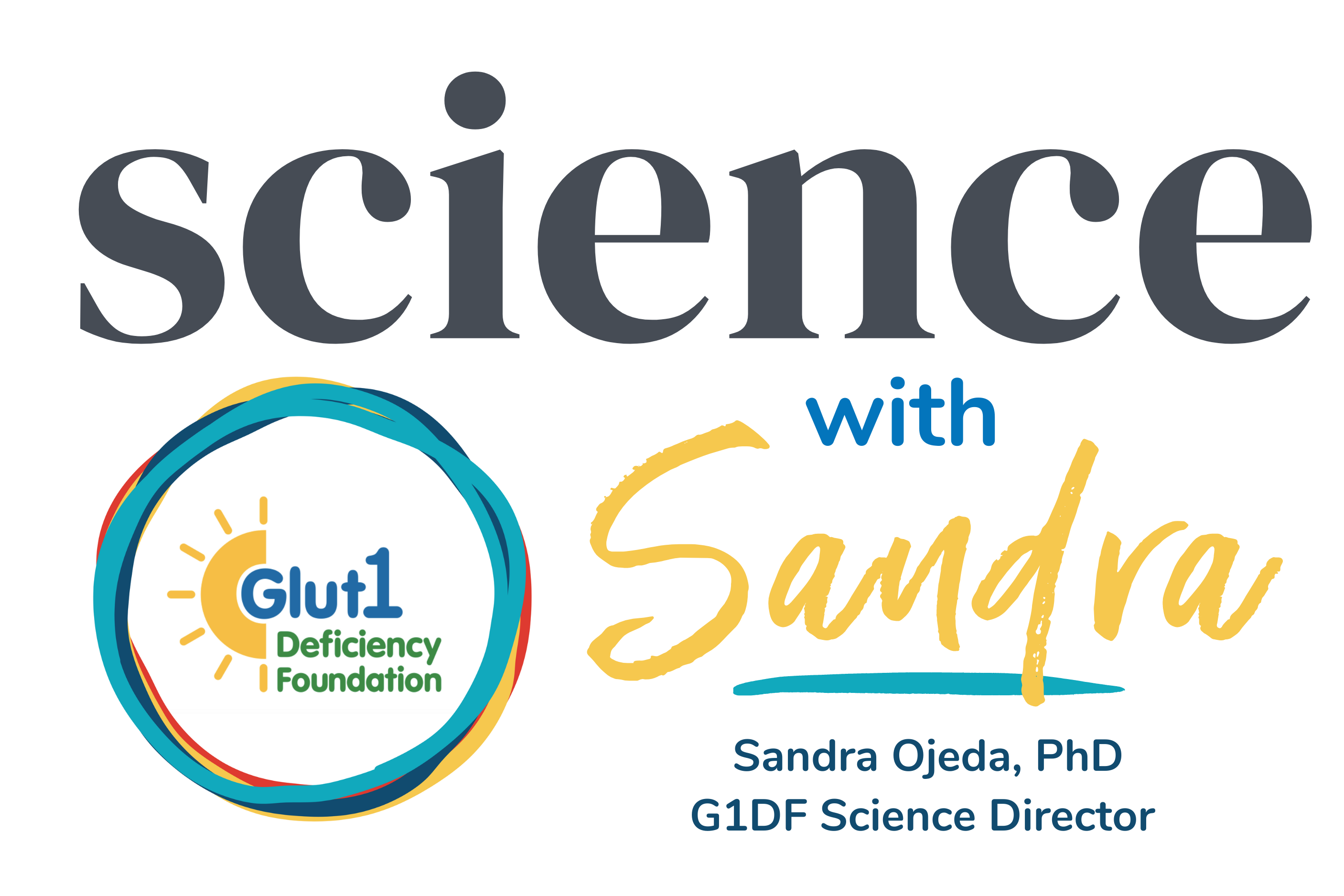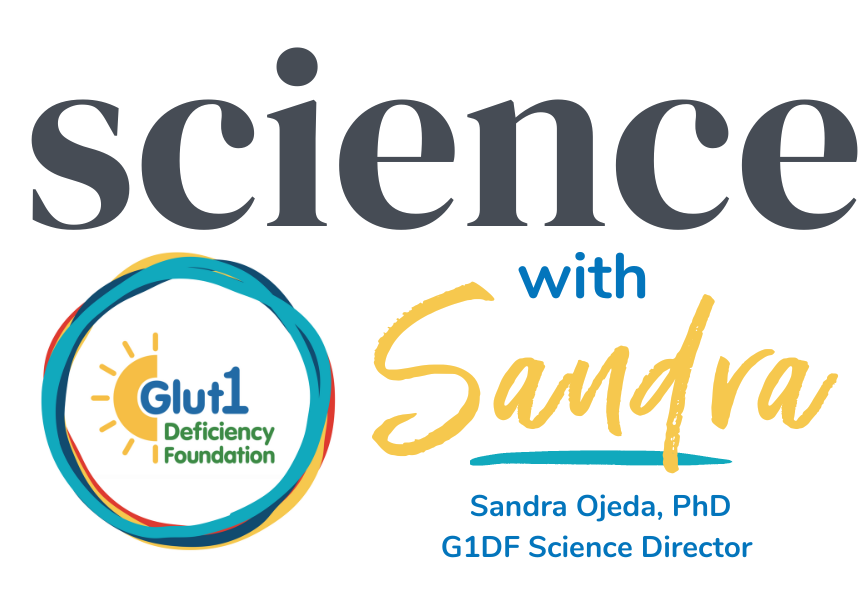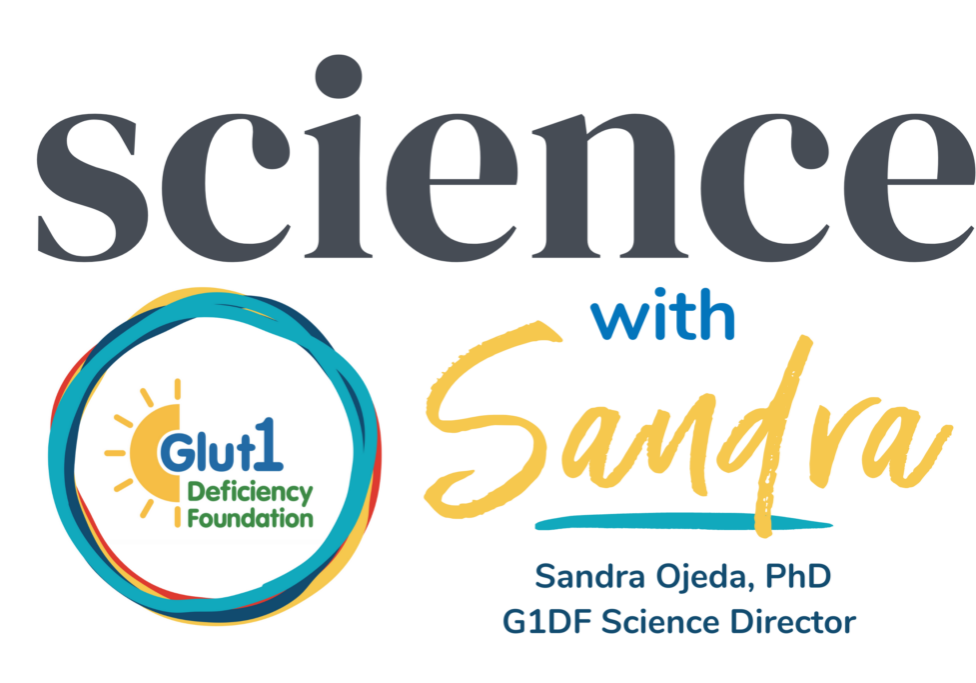Research Resources

Hello everyone and Happy New year! Welcome to Science with Sandra.
I hope you had a wonderful Holiday season!
For this issue I want to highlight some of the research resources the Glut1 Deficiency Foundation has developed, as well as some of the progress we have seen in different areas and how those are helping advance research in the GLUT1 Deficiency community to reach our goal of developing better treatments for our Loved Ones with Glut1.
First I want to highlight the Research Compass. The research compass was created to put the patients and families needs and priorities as the focal point to guide research in our community. We decided to call the roadmap a Research Compass because we believe that research progress in our community will come faster and easier not in a straight path, but creating relationships and collaborations across all the corners that impact the disease.
We have 8 major areas of focus including research tools, questions centered in cells, the GLUT1 transporter, metabolism, genetics of the disease, symptoms or pathogenesis, therapy development and clinical tools to improve the diagnostic process, support care and advance treatment. This resource has already played an important role in multiple areas. Researchers have advanced towards a better understanding of the disease, including identifying the area of the brain involved in the increased brain excitability and the development of seizures in GLUT1 Deficiency, the thalamus/sensorimotor cortex. This work was described in the publication “Metabolic modulation of synaptic failure and thalamocortical hypersynchronization with preserved consciousness in Glut1 Deficiency” written by Dr. Juan Pascual and his team. You can find a brief summary of this publication in this post.
There has also been progress in the development of cell lines to study GLUT1 Deficiency. Researchers in our community have developed cell lines that are helping to have a better understanding of the disease. Dr. Abraham Al-Ahmad and his team have developed induced pluripotent stem cells (iPSCs) that are deficient in GLUT1. These cells are a great tool because they can be differentiated into virtually any cell type, and can be used to better understand disease mechanism or to test potential treatments. Additionally, Dr. Al-Ahmad has developed a cell-based model of GLUT1 Deficiency at the Blood-Brain Barrier using these iPSCs. This model is described in his publication “ An in vitro model of glucose transporter 1 deficiency syndrome at the blood-brain barrier using induced pluripotent stem cells”. You can find a brief summary of this publication in this post.
Another research resource the Glut1 Deficiency Foundation has developed is a biorepository. The Foundation has established two biorepositories, one with Coriell and one in collaboration with COMBINEDBrain, where we store samples that patients have kindly donated and which serve as a powerful research tool. Some of the samples available include blood, fibroblasts, and other tissues. Furthermore, we have two patient derived iPSC cell lines and 4 more are being developed.
We have also seen progress in the development of research tools. For example, assays to determine the functional effects of mutations or variants on the GLUT1 gene (SLC2A1 gene) are now available. Dr. Christina Gurnett has developed a cell growth assay to study these functional effects. This assay allows to quantitatively determine the functional effects of the variants. The assay is described in the publication “Quantitative determination of SLC2A1 variant functional effects in GLUT1 deficiency syndrome” by Dr. Gurnett and her team.
There is also a better understanding of the GLUT1 transporter. Dr. Hudson Freeze and his team have found that the GLUT1 transporter is also a fucose transporter. Fucose is a simple sugar that plays important roles in mammals including blood transfusion reactions, immune cell adhesion for immune responses and host-microbe interactions among others. His findings suggests that the GLUT1 transporter could potentially have other functions which have not yet been elucidated. You can find more information about this study and a link to the publication in this post.
The area of metabolism in GLUT1 Deficiency has also seen progress. Early last year, Dr. Pascual and his team published the results of their study “Red blood cells as glucose carriers to the human brain: Modulation of cerebral activity by the erythrocyte exchange transfusion in Glut1 Deficiency (G1D)”. In this study, Dr. Juan Pascual and his team suggested that replacing red blood cells deficient in GLUT1 by red blood cells from healthy individuals could potentially increase the glucose transport from red blood cells to the brain. Results from this study showed that patients receiving the transfusion had improvements in cognition, and quality of life. On the metabolic side, the results of this study suggests that contact between red blood cells and brain endothelial cells provides a pathway to transfer glucose to cells in the brain that complements the pathway from plasma to brain endothelial cells. You can find a summary of the publication in this post.
Another area of focus of the Research Compass that has also seen progress, is the area of therapy development. In this area we have seen publications of studies about alternative treatments for GLUT1 Deficiency, such as C7 or triheptanoin, lactate or diazoxide. All of these studies have shown improvements for some of the patients involved in the studies which gives us hope that more and better treatments are coming soon for our community. There is also a better understanding on how the ketogenic dietary treatment (KDT) benefits patients. A study by Dr. Joerg Klepper aimed to characterize cognitive abilities in patients with GLUT1 Deficiency following a KDT with potential correlations with symptoms including linguistic abilities, and the possible negative effects of speech motor impairments in test performance. Some of the study findings indicate that patients with GLUT1 Deficiency show a wide range of cognitive performance levels and strong perceptual versus expressive language abilities.
Progress has been made in the area of clinical tools with the development of a blood test to assess GLUT1 Deficiency in patients with neurological symptoms by quantifying GLUT1 expression in red blood cells. Here you can read a Q&A with Dr. Vincent Petit, the CEO of METAFORA the company that developed the test.
There has also been progress in understanding the pathogenesis of the disease, and how the disease impacts patients’ quality of life. A publication by the Italian group of Dr. Pierangelo Veggiotti described clinical phenotypes, intelligence, life achievements and quality of life in a sample of families with GLUT1 Deficiency. The publication concluded that the phenotype or clinical symptoms in patients of familial cases of GLUT1 Deficiency show differences related to age, with epilepsy being more common during childhood, while paroxysmal exercise induced dyskinesia (PED) and fatigue, followed by epilepsy and migraine in adulthood.
Some of the research gaps that are still present in GLUT1 Deficiency include to have a better understanding of the effect of GLUT1 Deficiency on brain metabolism; which metabolic pathways are affected when GLUT1 is not functioning appropriately. This information will lead to the identification of other metabolic fuels that could potentially help patients with this condition or to understand how other potential treatments such as diazoxide or lactate benefit brain metabolism in GLUT1 Deficiency.
There is also a need to have a better understanding of what triggers symptoms such as movement disorders and if possible how to prevent them and/or treat them. Another gap that still needs to be filled is the need to improve cognition and speech and language abilities in our loved ones. These symptoms make a direct impact in our loved ones’ quality of life, and finding treatments that improve these symptoms is one of the highest priorities in our community. Although there has been some progress in possible treatments that have shown benefits for those symptoms, there needs to be a better characterization of the patient populations that benefit form certain treatments and why some treatments ameliorate some symptoms but not others and why they benefit some patients and not others.
Finally, some of the research goals we have for this New year include to increase participation the Natural History Study. We know this is an important research tool that we all can be part of. Information gathered in this study is valuable and can help researchers to have a better understanding of the disease, including the symptoms and their possible triggers. It can also help develop better future clinical trials that will focus on patients’ needs.
We also want to increase the research network in our community by increasing participation in our research roundtables. This is an important resource because it encourages collaboration among researchers, it keeps the community informed about current research projects in GLUT1 Deficiency, and it helps researchers learn from other fields of research.
Last, we want to help fund projects that will take into consideration the patients and families priorities, and that will help take us farther and faster towards our goal of finding better treatments and or a cure for GLUT1 Deficiency.
Thank you for visiting our blog! Please do not hesitate to contact me if you have any questions at [email protected]
Happy 2024!



